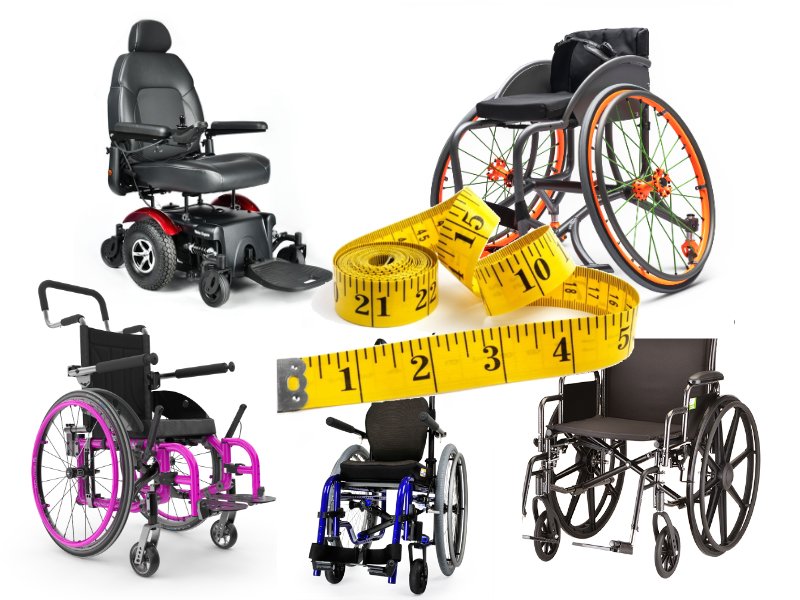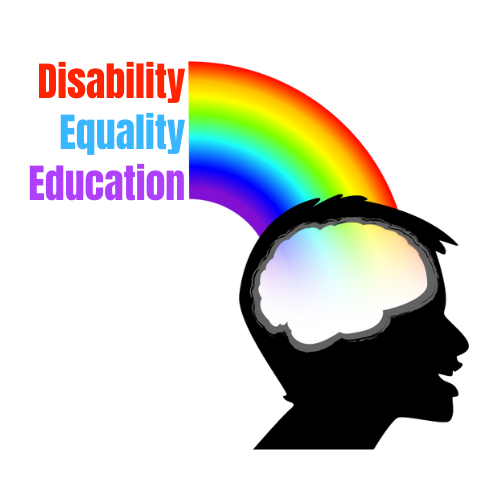
Hispanic Heritage: Frida Kahlo (Intersectionality of Ableism, Creativity and Feminism) Lesson
Frida Kahlo (1907 - 1954) was a Mexican artist who was influenced by the Mexican Revolution. She experienced a disability at two times in her life. Her determinism helped her cope with the pain of overcoming polio, a difficult marriage and bus-trolley accident. Frida Kahlo’s curiosity and love for nature were often the subjects of her paintings. Known as the “mother of the selfie,” Frida also created more than 200 paintings of herself. This unit of lessons is to recognize the creativity and imagination of Frida Kahlo.
Image description: Photograph of Frida Kahlo against a green floral background

History of Eyeglasses: The Importance of Adaptive Equipment
In this lesson, students will learn about science, history and geography related to eyeglasses. First, they will consider the history of eyeglasses, their impact on vision impairments, and how they are so widespread in America (and other high-income countries) that wearing them is rarely considered to indicate a vision issue; in fact, they are often fashion statements. Then they will explore how access to glasses differs around the world, specifically considering barriers that prevent access. Finally, they will choose their own adaptive device (a list of ideas is provided, but students are welcome to choose their own), and create an infographic that explains: the important benefits to widespread usage of their chosen device, current barriers, and suggest possible solutions.
Image Description: “History of Eyeglasses: The Importance of Adaptive Equipment” in black text on a light green box. On all sides is about a dozen black eyeglasses scattered on a white background.

How to be a Kind Helper Lesson
This lesson teaches students the qualities of being a Kind helper and how to put them into practice. Students will listen to a person with a disability and their personal assistant about what it means to be a Kind helper. After the talk, students will have a chance to ask questions about helping. Students will learn that open communication is key to a Kind helper relationship. Students will learn that a person with a disability can live full productive lives with the help of their personal attendant.
Image description: 9 raised hands with the words “How to be a Kind Helper”

I Deaf-initely Can, Rhett the Heeler
In this lesson, the teacher will read I Deaf-initley Can, Rhett the Heeler, a book about a Deaf girl who adopts a Deaf dog and teaches the dog sign language. The book shows the story from Rhett’s perspective of being chosen into Karlie’s family and learning about the world through sign language.
For discussion, students will think about other methods of communication. The takeaway message for students is that people (and dogs!) can communicate in many different ways—and all of them are valid.
Image Description: Cover of the book “I Deaf-initely Can - Rhett the Heeler” shows a girl and a dog sitting side by side on the grass facing away from us, looking at one another. There is a brown mountain range and sunset in the distance.

Infinite Motifs - the Art of Yayoi Kusama
In this lesson, students will learn about the paintings of Yayoi Kusama, an artist from Japan who is world-renowned for her immersive rooms and graphic paintings. Kusama lives in a supportive facility for people who live with psychiatric conditions, and has done so since the 1970s; the exact nature of her mental health support needs has not been disclosed to the public, but she has described experiencing hallucinations, anxiety, and pain in interviews. As part of this lesson, students will learn about different housing types for people of all abilities. Students will also be able to create either a painting or an infinity room (assignment can vary depending on your classroom materials).
Image Description: A large pumpkin sculpture sits on the grass, yellow and covered in vertical rows of black polka dots in varying sizes

Interdependence Lesson
This lesson will help students understand that we are all interdependent on each other.
Image description: stones leaning against one another forming an arch

Into the Woods: Exploring Disabilities in Fairy Tales and Classic Stories
Using Amanda Leduc’s book “Disfigured: On Fairy Tales, Disability, and Making Space,” as inspiration students will consider different representations of disability in fairy tales and classic stories. They will watch an interview and a reading with Leduc, read 2 texts referenced in her book and learn to identify issues with how disabled people are presented and stereotyped. Students will produce two written assignments. One is an update to a classic story (either Beauty and the Beast or the Little Mermaid); the students will rewrite the classic tale to center and honor experiences of all bodies and abilities. The second assignment is a choice assignment. Students will either rewrite a second tale, or write a 1 page autobiographical story in the style of a fairy tale.
Image Description: The cover of the book “Disfigured: On Fairy Tales, Disability, and Making Space” by Amanda Leduc

It Feels Like Spring: How We Experience the Seasons Through Our Senses
After listening to the book, “Naomi Knows It’s Springtime” by Virginia Kroll, the students will consider how Naomi experiences springtime, and how they experience springtime with the senses they have. Then, they will further explore the tactile experience of springtime objects combined with a Math lesson.
Image description: Cover of the book “Naomi Knows It’s Springtime" showing a grassy field, someone pushing a lawnmower in the background, a girl with braided hair and a dog to her side, tail in the air, facing us seated at a garden

Laura Hershey Poetry Lesson: “You Get Proud By Practicing”
Students will analyze Laura Hershey’s poem, “You Get Proud By Practicing.” A poet, author, and activist, Laura Hershey first published the poem in 1991. To better understand its context, students will learn about neuromuscular diseases, disability activism in the 1980s, and the passing of the Americans with Disabilities Act of 1990 (ADA). Students will then analyze the poem for repetition and figurative language and understand what Hershey suggests it means to get proud. After discussing the poem, students will write and share their own poems about getting proud using those literary devices.
Image description: photo of Laura Hershey

Mapping the Travels of James Holman - Using a Political Map of the World
NOTE - This lesson works best following a general introduction about using a Political World Map
This lesson introduces students to James Holman, a blind world traveler and travel writer. He became the first blind person recognized for traveling around the world solo in 1832. He wrote extensively about his travels. Students will practice using a World Political Map to locate where he traveled. This exercise also demonstrates one way we can use maps to help us as we study history.
Image Description: “Mapping the Travels of James Holman Using a Political Map of the World” in black on a marigold background. A greyscale world map showing the routes he traveled is below the text.

Maya Angelou Lesson
In this read-aloud of a picture book version of Maya Angelou’s “Life Doesn’t Frighten Me”, students will learn about and discuss fear, what it means to be brave, and how to cope when feeling scared. Students will learn about Maya Angelou and selective mutism, which is an anxiety disorder that Maya Angelou experienced for 5 years during adolescence.
Image description: Sketch of Maya Angelou

Measurement Lesson Plan
This lesson will help teach measurement by having students estimate the width of doorways and then measure doorways to determine if they are wide enough to meet ADA standards.
Image description: 5 wheelchairs with a yellow tape measure curled over them

Mechanical Engineering: Wheels and Gears - How One Invention Can Lead to Another featuring Ralph Teetor
This lesson is a STEM lesson followed by a History lesson with an ELA activity. The STEM lesson explores basic concepts of mechanical engineering and physics while showing that the parts, knowledge and skills used to develop old, even ancient machines can be used to create new machines.
The students will learn that machines are made up of smaller parts and that often the same parts are recombined to make sometimes very different machines. These parts operate according to standard scientific principles. The students will explore wheels and gears as they think about the small parts that machines like bicycles and cars have in common. They will think about how the same parts can be combined to invent new machines.
During the next part of the lesson, the students will learn about Ralph Teetor, the blind mechanical engineer, who built on his knowledge of bicycles and used his degrees in Mechanical Engineering to become a successful businessman and automotive engineer. He invented modern cruise control among many other things, often—but not exclusively—leading to improvements in the design of automobiles.
Students will gain a better idea about how inventors use their existing knowledge and education to invent new things. They will learn that sometimes prejudice leads people to be resistant to new ideas, while imagination, work, and education can lead to new opportunities and inventions. When these students are older, when they think about cruise control, they’ll remember that blind people—just like sighted people—can have a variety of talents, skills, and interests.
Image Description: 4 gears in shades of blue on a background of grey gears
More Than A Wheelchair: Accessibility Symbols
Students will consider the icon of the person in a wheelchair, the “International Symbol of Access.” They will learn about its history and the recent Accessibility Icon project that updated it. They will also consider other disability symbols, both in the US and internationally (such as symbols that indicate Deafness, Hidden Disabilities, and Autism, and how they are used/not used in other countries).
Art extensions include photography assignments to document iconography in their school and in everyday life and new symbol-making where students make new symbols that could replace the wheelchair, and be more inclusive.
Geography extension is a study of symbols and use/news about them in other countries. Students will be assigned a country to study either individually or in groups, and explore disability iconography in that place. This activity would work well as a library-based extension as well.
Image Description: a white and blue reserved parking sign with a traditional wheelchair accessible symbol and a clear backed sticker of the new Accessible Icon in red pasted over it.

My Travelin’ Eye Lesson Plan
In this lesson the teacher will read aloud My Travelin’ Eye. This book shows from the character’s perspective what it is like to be on the receiving end of bullying and how she had to cope. As a way of coping Jenny’s mom made her special fashion eye patches. The takeaway message for students is that people who look different and have disabilities are still people in the world just like them.
Image description: Cover art for the book “My Travelin’ Eye”

The New York Times - ‘26.2 Miles Is Easy. Getting Around New York City Is Not.’ - Lesson Plan
In this lesson, students will learn why it’s easier for one athlete to win a marathon in New York than to navigate the city in a wheelchair. Then, students will evaluate the accessibility of public spaces where they live.
Image Description: "The Learning Network Teaching & Learning with the New York Times" Below the text is a photograph of Daniel Romanchuk in his racing wheelchair crossing a busy street at a crosswalk.

The New York Times - ‘The Hidden Image Descriptions Making the Internet Accessible’
In this lesson, students will learn about alt text, and image descriptions that help people who have low vision or are blind to use the internet. Then, they will practice using the feature.
Image Description: "The Learning Network Teaching & Learning with the New York Times" Below the text is the Mona Lisa with 3 examples of alt text descriptions from Microsoft Word, Facebook and Wikipedia.

New York Times: Learning With: ‘Adaptive Video Game Controllers Open Worlds for Gamers With Disabilities’
This lesson explores how adaptive video game controllers are transforming gaming for players with disabilities. Students will first reflect on their own gaming experiences before analyzing a commercial and reading an article about accessibility in gaming. Through discussion questions, they will examine the challenges faced by disabled gamers, how technology has evolved to be more inclusive, and the broader impact of adaptive controllers. The lesson encourages critical thinking about accessibility in technology and invites students to consider how they would design more inclusive gaming experiences.
Image Description: "The Learning Network Teaching & Learning with the New York Times" Below the text is a photo of Erin Hawley playing video games with her family. She uses an adaptive controller.

One Out of Five lesson series
The purpose of this lesson is to humanize the experience of disability by focusing on student-voice videos, recognize diversity within the disability community, and discuss ways to promote accessibility. This is the first in a series of 5 lessons by Washington State’s One Out of Five Disability History and Pride Project.
Image Description: Groups of students sit and stand, talking in clusters. The profiles of the students of different ages, races, and abilities is on a colorful background of yellow, orange, and green. The dominant image is the silhouette of a male student in dark blue reading a book. The title is: One Out of Five: Disability History and Pride Project. “One” and “five” are spelled out in American Sign Language. At the bottom, Braille reads: “pride” and “history.”]

Out of my Mind - Book Discussion Guide
Out of My Mind is narrated by a girl with cerebral palsy who's very intelligent but unable to express herself by speaking or physically. When Melody is integrated into some general classes at school, many kids are purposely mean; others, including teachers, are cruel through their assumptions that Melody is incapable of understanding them. With the help of her parents and some supportive friends and teachers, Melody acquires a machine that allows her to communicate better than she ever has before (Common Sense Media). At last Melody has a voice… but not everyone around her is ready to hear it (Draper, 2010). This book discussion guide can also be adapted into a full assignment if that is more applicable for your student group.
Image description: Cover from the book “Out of My Mind”
